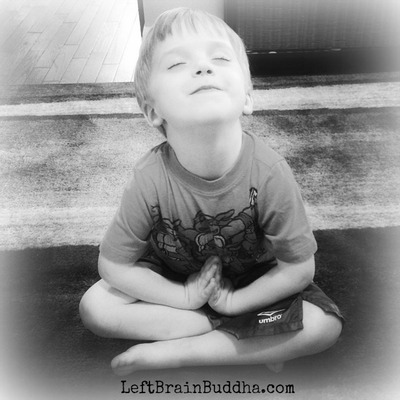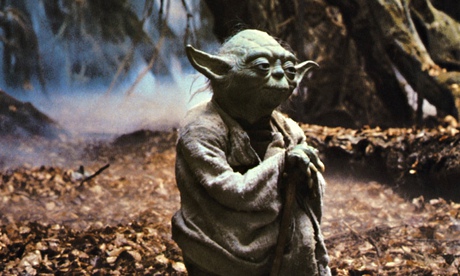Dear all,
I was sent this Quarterly Newsletter by Dr Judy Willis that links perfectly with next week's book week. More information about Dr Willis can be found at http://www.radteach.com/ and is worth exploring. If you are interested there are at the end of this article a range of interesting links on work that Dr Willis has been exploring on a broad range of topics that also link with work being undertaken in different sections of the school
Have a fun Book Week,
Yours
Adrian
Classroom
Experiences to Motivate Eager Lifelong Readers
 It
is more of a challenge in this time of an abundance of reading choices to
engage students in the joyful habit of reading extended text in both fiction
and nonfiction. With texting, Facebook, and other social media, younger and
younger children have ready access to read and write about a topic of high
interest to most individuals - themselves and their friends. They can also get
instant updates on other areas of high personal relevance such as sports,
music, entertainment, and video games. For many students, during the challenge
of learning to read and the later burden of forced text reading assignments,
the idea of choosing to read at length for pleasure is not something they've
experienced or value.
It
is more of a challenge in this time of an abundance of reading choices to
engage students in the joyful habit of reading extended text in both fiction
and nonfiction. With texting, Facebook, and other social media, younger and
younger children have ready access to read and write about a topic of high
interest to most individuals - themselves and their friends. They can also get
instant updates on other areas of high personal relevance such as sports,
music, entertainment, and video games. For many students, during the challenge
of learning to read and the later burden of forced text reading assignments,
the idea of choosing to read at length for pleasure is not something they've
experienced or value.
Buy-In
The Harry Potter series was a boon to motivating a generation of young readers,
but there may not be another series of books with the magnetic power of wizards
for some time. Even without a new irresistible series, children can develop the
joy of the reading books that already fill library and bookstore shelves.
Students' interests are the most powerful motivating force to inspire reading.
A study of 60 adults with dyslexia who all learned to read late (13 to 14
years) but eventually became good readers supports the motivating power of high
interest good readers and writers. The commonality was they attributed their
success to hard work driven by their desire to read about very high interest
topics such as airplanes and the Civil War. (Fink, R. 2011. Why Jane and John Couldn't
Read--And How They Learned)
Use your knowledge of your students' interests or those of their age group in
general such as their superheroes in sports, fantasy, or music, wild mustangs,
science fiction, the ocean, space exploration, insects, people from other lands
and times, and special seasonal events. Keep a variety and rotation of books
and magazines (and if needed for special need students, recorded books) around
the classroom related to their interests and provide casual opportunities for
them to come in contact them.
To extend reading
interests and appreciation, observe which topics draw the attention of
individual students. Use these observations (and note cards) to guide them to
other books on the topics and to set up book clubs with students who share
common interests. Once these "clubs" meet, peer curiosity will pull
others into the topics that generate their classmates' enthusiasm.
You'll also inspire
expanding reading interests by providing a selection of books that include
powerful images, illustrations, and photos such as National Geographic. Curiosity is
strong in children, and when not snuffed out by forced assignments with little
choice about what they read, they'll at least glance through these magazines or
books and from the visuals and become lured into the text.
For some kids, the
"choose your own adventure" books are great for book buy-in. These
books give the reader chances to make choices for the character. Their choice
is linked with the instruction to turn to a particular page and the story
progresses from there. They will develop the previously unlikely habit of
rereading when they go back to the pages with the choice to select a different
option.
Because students will have
different reading levels, you'll want to provide reading materials suitable to
their independent skills. Watch how students evaluate the reading offerings. If
a student shows high interest in a book out of her range but is quickly
intimidated by the difficulty, length, or small print, seek out abridged
versions (even in comic books, recordings, or video versions) as a starting
point that offers achievable
challenge. Once she has the gist of the plot and characters, she will have more
background knowledge for context cues to progress to the complete book. Allow
her to return to abridged book or notes taken from the introductory sources to
check on her understanding of the movement of the plot, settings, or to keep
track of the characters.
A Cycle of Success
and Pleasure
A cycle of success and
pleasure can transform students from reluctant to eager readers. As they read
more books in high-interest areas, the increased depth of the specialized
knowledge that they acquire can help them develop valued expertise and motivate
further reading. This cycle is facilitated if you incorporate their special
knowledge into planning collaborative group activities that gives value to the
expertise they develop in navigation, exotic parts of the world, rare animals,
their high interest hero, inventions, or unusual customs.
When classmates value the
special knowledge they acquire from personally chosen reading, students
experience a boost in self-image, confidence, and the recognition of the
benefits that came from reading for pleasure. These experiences will promote
more reading with the accompanying increase in reading skills. As the cycle
continues, their increased reading skills will result in more satisfying
reading experiences and progress to higher levels of challenge and success in
all their reading.
Boost Their
Dopamine and Tickle Their Mirror Neurons
Read aloud and leave them wanting more. Students of all ages enjoy being
read to. The brain is even programed to squirt out a burst of the
pleasure-activating neurotransmitter dopamine in response to being read to.
Once you establish the reading of an engaging book or magazine article, plan
ahead for a stopping place that is especially tantalizing. The desire of
wanting more of the book, and of that dopamine, will increase their motivation
for independent reading.
For students not already
engaged in an independent reading book, this is perfect timing for them to have
five minutes to pick up a new book or magazine from those you've placed around
the room, followed by time to explore or read their choices. Some will flip
through and reject and try another while others dig in. It is the habit and
interest in reading for pleasure that is the goal here, not the number of pages
completed; so let them evaluate the books in their own ways.
If you have regularly
scheduled silent sustained reading periods, join in. Even when you don't have
these specific opportunities to model your reading, find other times, such as
during indoor recess on rainy days or when students take tests, to let them see
your physical responses as you read. Your expressions, chuckles, little gasps
of surprise, and gestures of satisfaction when you find something you were
seeking make impressions on your students. Letting them see and hear your
enthusiasm, satisfaction, or pleasure can activate their mirror neurons
associated with the same positive emotions in their brains. If you can
subsequently describe what you read that with authentic pleasure, you'll be
modeling the satisfaction you hope your students will experience in their
reading.
It is also of value for
students to see you being challenged when reading, such as by more technical
books. This increases their comfort about difficulties they have reading
complex books. Talk about your own reading challenges in class and at home. If
the primary source historical documents you are reading are dense with facts
and you needed to take frequent breaks, just do a few pages a day, or look up
unfamiliar words, let your students know how you felt. Tell them, "It is
hard reading. I keep getting up and moving to another chair or adjusting the
lights. I need to give my brain a break, so I could get through it and learn
what I really do want to know. Sometimes, I read the same sentence two or three
times, and I even have to write things down, so I can understand and remember
what I read. But it is worth it when I understand something that was unclear at
first or learn something new and really cool that links to what I'll be
teaching you. That happened last night and I can't wait to share it when we get
to that topic."
If you had trouble
developing an interest in reading or had a harder time than your classmates
when learning to read, this is also good information to share with your
students. If there were special interests that connected you with certain
books, share these memories. They may see you reading books with tiny print,
many pages and no pictures, and think you were just a born reader and didn't
have to struggle as they do. Knowing about your frustrations or embarrassments
helps them remain optimistic when they are struggling in the same ways.
Overt the Rainbow
As your students' reading motivator, you'll be their guide to the
worlds they can reach through books traveling over the rainbow and deep into
vast pools of knowledge. Your guidance will light the way and the books they
enjoy in your classroom will ignite their pleasure that awaits them as lifelong
readers.
Keep igniting,
Below are links to my recent articles,
videos, and Edutopia staff blogs. Updated links to additional articles, blogs,
videos, and webinars as well as frequent updates about where I'll be doing
presentations and workshops can be found through my website: www.RADTeach.com
Recent Articles & Edutopia or NBC New Education Nation Blogs
Edutopia Staff blog - September 22, 2014
Staff blog - August 20, 2014
STEM Magazine - October
2014
Edutopia Staff Blog. July
18, 2014
ASCD Express. July 3, 2014
Volume 9 | Issue 20
STEM Magazine - June 2014
NBC Education Nation -
January 2014
Edutopia Staff Blog -
March 11, 2014
Takepart.com - January 14,
2014
TeachThought Issue March
16, 2014
Edutopia Staff Blog -
March 17, 2014






